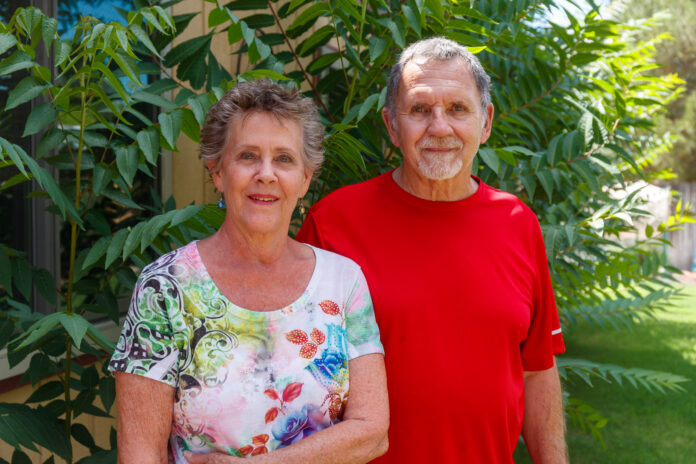Camp Verde resident Christine Gallo, 71, faithfully scheduled a yearly mammography every October. Because of early detection, Gallo never thought she would be a statistic.
One-in-8 American women and 1-in-1,000 American men will be diagnosed with breast cancer in their lifetime. It is the second-leading cause of death by cancer after lung cancer. The number of women who have died of breast cancer has decreased by 42% from 1989 to 2019 because of early detection and treatment.
But what if the detection was missed multiple times?
Patients rely on radiologists to competently identify cancer as early as possible in order to have the best chances of recovery. Unfortunately, radiologists who don’t detect lesions visible on mammography scans can result in malpractice lawsuits and breast cancer misdiagnosis is the leading cause of radiologist malpractice, according to several law firms.
Gallo worked in the medical industry for more than 25 years and was a medical assistant for Kim Carlton, a physician’s assistant at Northern Arizona Healthcare in Cottonwood. She ensured that employees signed up for yearly mammograms, pap smears, routine exams and blood work. In addition, she called patients about their mammography results. Gallo was diligent in getting her yearly mammograms because of a family breast cancer history — her sister was diagnosed at the age of 47.
Though she was diligent with mammograms, she became a breast cancer statistic. She was included on a list of women in the Verde Valley with a missed diagnosis of breast cancer.
According to Gallo, radiologist Dr. Mike Ulissey, and her surgeon, Dr. Beth DuPree, Gallo’s mammography reports indicated that from 2017 to 2019, her breast cancer went undetected by two radiologists who worked at Northern Arizona Radiologists and who has a contract with NAH.
According to her mammography reports from 2017 to 2019, shared with Sedona Red Rock News, Gallo went to the Verde Valley Medical Imaging Center for her routine mammogram each year for 2D and 3D scans. She said she was told by her physicians who read the radiology reports that everything was fine. It wasn’t until 2019 that her mammography reports were flagged.
On Nov. 20, 2019 Gallo went in for another breast screening Ulissey said he asked why she waited to come back because significant cancer had been detected. Gallo said she told Ulissey that she did come back but received “normal” reports.
Ulissey said comparisons to 2017, 2018 and 2019 were “Highly suggestive of malignancy,” and that obvious cancers were missed in Gallo’s previous reports in 2017 and 2018.
On Nov. 26, Gallo had multiple ultrasound-guided biopsies and was referred to DuPree for surgical consultation, ending with a bilateral mastectomy, or the removal of both breasts.
Gallo requested that DuPree review her past mammograms. She said she couldn’t understand how three masses could suddenly appear after two previous years of normal mammography reports.
“With Christine, it was a matter of helping her figure out her path forward to treat cancer. She did ask me if those areas were visible on a mammogram,” DuPree said. “Obviously, it’s somebody’s opinion; they were visible. Why nothing was done with it …. It doesn’t serve anybody to have a patient get spiraled and not be focused on moving forward and treating their cancer. This is her journey. So, she was trying to do the best she could to figure out how to go forward in her life and as someone who worked in health care for NAH, this was a double whammy for her.”
Gallo dealt with knowing her cancer could have been detected in its early stages but wanted to get to the bottom of why this happened.
In a letter dated Feb. 20, 2020, to Florence Spyrow, former president and CEO of NAH, Gallo wrote, “Why did VVMC not have breast-specific radiologists before 2019, who would have certainly seen my cancer in its ‘early’ stage?”
“I believe that VVMC radiology failed me,” Gallo alleged. “Had an ‘early detection’ been a reality, a less radical, less invasive course of treatment would likely have occurred at least one year earlier.”
Gallo filed a complaint with the NAH patient relations manager in Flagstaff and said she was told she was on a list with other women who may not have been property diagnosed.
“So that’s when I went in to talk to [Spyrow] and [wanted to know] why I wasn’t notified, No. 1.” Gallo stated. “You know, what happened with that list? They never answered me about that. Never came up with it. They said that they were contacting them, and they were coming back in to be rechecked. They told me they were being taken care of — I don’t know what that meant. They never answered my question.”
Gallo said she worries about other patients that she called as a medical assistant, wondering if she gave them the correct results.
“When I was made aware of my missed diagnosis, I was, and still am terrified that I may have called women with erroneous results that may have denied them ‘early detection of breast cancer,’” she said “My only hope is, if that was the case, their subsequent mammogram was
assessed accurately.”
On Aug. 4, 2020, Gallo and her husband, Larry, met with Spyrow and Ronald Haase, former Chief Administrative Officer with NAH.
In an audio recording provided to the NEWS, when asked about the other women, Spyrow stated, “We contacted those women, we asked them to come back in. They were able to be contacted, and we have addressed those issues. If there were issues, in some cases, it was found that it was not anything to be concerned about, but we use extreme caution … if there was any question whatsoever. We brought people back in, we paid for those mammograms to be completed, and we tested them, and if there was anybody who had missed, they are aware of that. We’ve been very transparent with people wanting to be honest with them.”
Gallo said she was never called by Spyrow nor NAH.
“I will tell you only fellowship- trained breast radiologists are reading mammographies at NAH,” Spyrow said on the recording. “There is no place at NAH where a general radiologist would be reading a mammogram.”
DuPree and Ulissey said certified breast radiologists came on board in January 2019 at the insistence of DuPree. Ulissey said that Northern Arizona Radiology is contracted to work with NAH.
NAR hired Ulissey as a fellowship-trained breast radiologist, and he said he and two other radiologists* were asked to participate in a quality review, which took four and a half months and consisted of reevaluating 13,675 breast images in 6,344 patients who had previously been screened and told that their mammograms were normal between the years 2016 to 2018.
That number was narrowed down to 190 women who required additional imaging for evaluation. Of that, 23 were found to have breast cancer, seven of them had precancerous lesions, and all were required to have either surgery, chemo, radiation or a mastectomy, Ulissey said.
Ulissey added that he reported all the findings to his supervisor at NAR and the Board of Directors at NAH.
* Clarification: The original story was not clear that Ulissey did not conduct the quality review alone but rather that he was one of three radiologists hired by Northern Arizona Radiology to conduct the review.



















